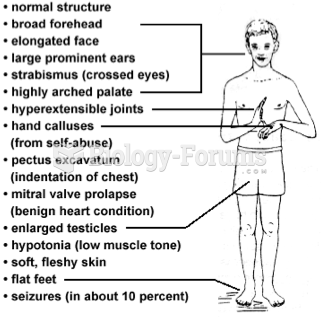|
|
|
People with alcoholism are at a much greater risk of malnutrition than are other people and usually exhibit low levels of most vitamins (especially folic acid). This is because alcohol often takes the place of 50% of their daily intake of calories, with little nutritional value contained in it.
When blood is deoxygenated and flowing back to the heart through the veins, it is dark reddish-blue in color. Blood in the arteries that is oxygenated and flowing out to the body is bright red. Whereas arterial blood comes out in spurts, venous blood flows.
The average office desk has 400 times more bacteria on it than a toilet.
In the United States, there is a birth every 8 seconds, according to the U.S. Census Bureau's Population Clock.
A seasonal flu vaccine is the best way to reduce the chances you will get seasonal influenza and spread it to others.







